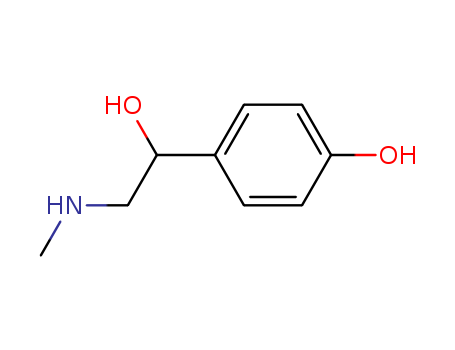- +86 15383000851
- +86 15303238802
- admin@hebeianda.cn
Your Location:Home >Products >Chemical Reagents >94-07-5


pd_meltingpoint:187 °C (dec.)(lit.)
Appearance:off-white to beige powder
Purity:99%
|
Plant Extract |
Synephrine is a kind of biological active substance, mainly extracted from the orange, tangerine peel, green husk and rutaceae plants, is a traditional Chinese medicine and plays an important role of frutus aurantii immaturus effective component, has a strong heart, increase blood volume contraction, blood vessels, high total peripheral vascular resistance and make the left ventricular pressure and the effect of arterial blood pressure, shock resistance, and the effect that reduce weight, but because the Synephrine has the similar structure to that of jute alkali has excited central nervous, the potential side effects of cardiovascular disease, in recent years it is limited to use in the United States, Canada and other countries. Figure 1 the extract of frutus aurantii immaturus Synephrine |
|
Introduction |
Synephrine[meaning p-synephrine in most cases], is an alkaloid, occurring naturally in some plants and animals, and has been also supplemented in approved drugs products as its m-substituted analog known as neo-synephrine[1]. Figure 1 Chemical structure of the synephrine. ; Synephrine[Figure 1] is a key proto-alkaloid found in Citrus aurantium[bitter orange] and other Citrus species[C. reticulata, C. sinensis, C. deliciosa, C. limon, C.limonia, and C. unshiu] as well as in Evodia rutaecarpa[2-5]. It is widely used in weight management and sports performance products. Moreover, it is usually consumed in various foods and juices derived from Citrus species as Seville oranges, mandarin oranges and many other orange-related species containing p-synephrine[7,8]. However, p-synephrine may cause potential cardiovascular hazards as found in many previous studies[9-11]. P-synephrine[P-s], often referred to as simply synephrine[12], is an alpha-adrenergic agonist[13] that also has some beta-adrenergic properties[14]. P-s occurs naturally in the human body in small quantities and may act as a neurotransmitter[15]. Since 1927, usually under the name oxedrine, it has been used as a pharmaceutical[16], commonly in the form of eye drops. Oxedrine is thought to be the primary ingredient in C. aurantium that produces weight loss, but neither this nor whether C. aurantium produces weight loss in humans is firmly established. M-synephrine, often referred to as phenylephrine, is an isomer of p-s. It is also an alpha -adrenergic agonist that also has some beta-adrenergic agonist properties. It has been studied far more extensively than p-s and is one of the two most widely used OTC decongestants today[12]. In Asian traditional medicine, synephrine was used in the treatment of digestive problems, to stimulate appetite and gastric secretion, in clear contrast with the aim of promoting weight-loss[17]. In the Mediterranean region, it was used as a cardiac and vascular stimulant, with stomachic, sedative, and general tonic properties[18]. Its most important and famous application is used for weight management, for the treatment of obesity. |
|
Applications |
The most famous application of synephrine is used for the treatment of obesity. Obesity is considered a growing public health issue: more than 1 billion adults are overweight and at least 300 million people are obese[BMIP30 kg/m2][19]. These situations lead to increased morbidity and mortality due to diseases such as diabetes mellitus, cardiovascular diseases, hypertension, and cancer[19, 20]. Due to its affinity to a-adrenergic receptors, p-synephrine is marketed as an intravenous drug to treat hypotension[17, 21]. m-Synephrine has been widely employed in parenteral formulations as an intranasal decongestant[22, 23], a vasopressor agent used in surgical procedures, in priapism treatment, and as a mydriatic agent[21]. |
|
Mode of action |
Both m- and p-synephrine activate several types of adrenergic receptors[21, 24]. Synephrine’s mechanism of action as a weight-loss stimulant is attributed to the lipolytic effects that occur with the activation of beta3-adrenergic receptors and consequent thermogenesis[Brunton et al., 2005; Moro and Basile, 2000]. Noteworthy, the occurrence of adverse effects associated with the consumption of synephrine is related to the nonspecific adrenergic stimulation[17]. The antidepressant effect of synephrine has already been described in rats through the tail suspension test and reserpine-induced hypothermia, two in vivo tests commonly used to screen for antidepressant activity[27]. Moreover, p-synephrine also demonstrated antidepressant effects through behavioral assays[tail suspension test and forced swimming test] in mice. The antidepressant-like activity in those assays was more pronounced at doses of 3 and 10 mg/kg[28]. A recent study demonstrated that synephrine acts on serotonergic receptors since its constrictive effects on rat aorta were concentration-dependently antagonized by pre-treatment with 5-HT1D and 5-HT2A antagonists[29]. |
|
Risks and Warning |
Since synephrine has structural and pharmacological similarities with other sympathomimetic amines and, therefore, it can cause similar side effects. Unfortunately, studies in the fields are still limited. Animal studies have shown that it can reduce the locomotor activity of mice[30,31]; reduce the relative mass of the adrenal glands in rats[2]. In human beings, there are reports that synephrine can cause ischemic colitis and seizure[21,31]. However, the biggest safety concern associated with synephrine is still related to its potential cardiovascular toxicity. In Canada, between January 1998 and February of 2004, 16 cases of severe cardiovascular symptoms associated with weight-loss products containing synephrine were reported. These incidents determined synephrine’s interdiction in dietary supplements by Health Canada[32]. In 2010, Health Canada published new guidelines for the use of synephrine in natural products, which establish a daily limit of 30 mg as the maximum allowable dose for synephrine in these products[33]. The ergogenic mechanisms of sympathomimetic agents such as synephrine include increased heart rate and energy expenditure through central stimulation[34]. The users can undergo severe functional cardiac effects because of the increases in the after-load and heart rate, which can result in a higher myocardial oxygen demand, decreased diastolic filling, and failure to supply oxygen to the cardiomyocytes[36]. It has been also found that synephrine may cause a significant increase in systolic pressure[37] as well as promote an increase in total peripheral resistance during 30–60 min in healthy volunteers[35]. In vivo studies demonstrated an increase in mortality rate and electrocardiogram abnormalities in rats treated with synephrine for 15 days. The cardiac effects persisted for 15 subsequent days after the end of treatment[38]. These studies suggest a possible association between synephrine consumption and the occurrence of ventricular arrhythmias and increased cardiac output. |
|
Chemical Properties |
Off-White to Beige Powder |
|
Uses |
A α-adrenergic receptor agonist, vasoconstrictor. |
|
Definition |
ChEBI: A phenethylamine alkaloid that is 4-(2-aminoethyl)phenol substituted by a hydroxy group at position 1 and a methyl group at the amino nitrogen. |
|
Synthesis Reference(s) |
Journal of the American Chemical Society, 71, p. 1045, 1949 DOI: 10.1021/ja01171a079 |
|
General Description |
Synephrine is a sympathomimetic amine from the plant?Citrus aurantium and is identified as a major active component of dietary supplements. |
|
Biochem/physiol Actions |
Synephrine is naturally found in citrus plants belonging to the Rutaceae family. It is a sympathomimetic alkaloid. Synephrine has 3 isomeric forms, such as m-synephrine, p-synephrine and o-synephrine. It exhibits β-adrenergic properties. |
InChI:InChI=1/C9H13NO2/c1-10-6-9(12)7-2-4-8(11)5-3-7/h2-5,9-12H,6H2,1H3/t9-/m0/s1
This invention relates to a novel soluti...
The present invention concerns a pharmac...

methylamine


synephrine
| Conditions | Yield |
|---|---|
|
With
palladium on activated charcoal; ethanol;
Hydrogenation;
|
|
|
With
ethanol; platinum;
Hydrogenation;
|
|
|
With
ethanol; nickel;
Hydrogenation;
|


synephrine
| Conditions | Yield |
|---|---|
|
With
water; nickel;
at 90 ℃;
Hydrogenation.unter Druck;
|

5-(4-benzyloxy-phenyl)-3-methyl-oxazolidin-2-one

1-(4-hydroxy-phenyl)-2-methylamino-ethanone

methylamine

1-(4-methoxyphenyl)-2-(methylamino)ethan-1-ol

(+/-)-N,N-Dimethyloctopamine

4-hydroxyphenylacetaldehyde

1-(3,5-dibromo-4-hydroxy-phenyl)-2-methylamino-ethanol
CAS:119356-77-3
CAS:868844-74-0
CAS:2079878-75-2
CAS:23239-88-5